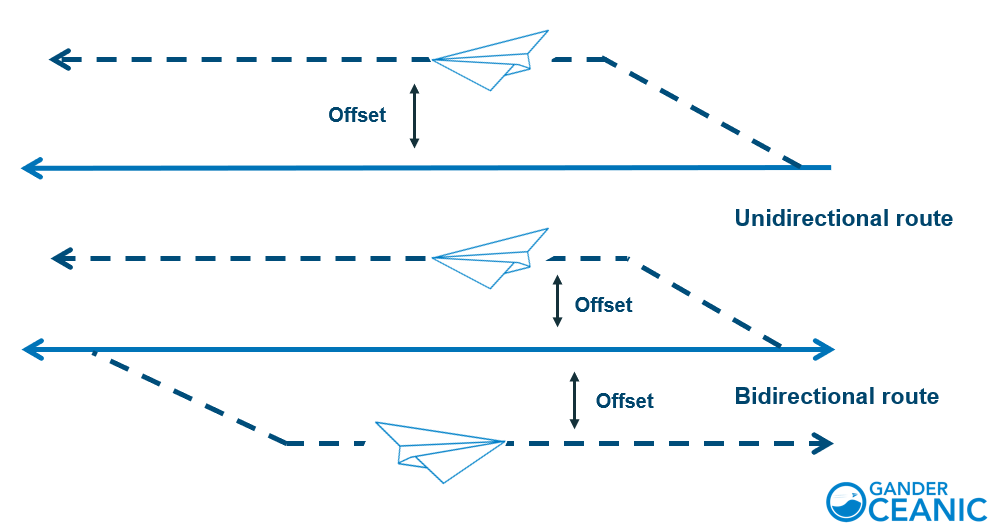SLOP
Strategic Lateral Offset Procedures (SLOP)
The purpose of the Oceanic Clearance is to ensure separation standards are maintained from the very entrance into the oceanic airspace, however, humans are not perfect by any means. Navigation and clearance mistakes are sometimes made (sometimes big mistakes) that result in aircraft flying at unintended flight levels, or as far as one degree off track.
Can't modern-day technology help fix navigation errors?
Ironically, the precision of modern navigation technology, designed to decrease the likelihood of navigation errors, can present additional navigation hazards. This is known as the 'navigation paradox' - the increased accuracy of navigation technology increases the risk of a mid-air collision. This is due to the ability for aircraft to fly so precisely along a defined route, that the likelihood of two aircraft occupying the same area in the sky is greatly increased. Over an area serviced by VHF radio, a controller can intervene relatively quickly to avoid a collision, but over areas where VHF is not possible and controllers rely on HF, CPDLC and SATVOICE, there can be a considerable delay between detection and action given the communication challenges.
Without any randomness, the potential for an accident is uncomfortably high, so it was determined that by encouraging aircraft to fly random route offsets, an additional safety margin would be provided and the risk of a mid-air conflict would be dramatically mitigated. The application of this technique is defined in a set of procedures known as the Strategic Lateral Offset Procedures (or affectionately, SLOP).
So, how do I use SLOP?
SLOP defines the following guidelines:
- aircraft may fly offsets to the right of their designated route up to a maximum of 2 NM; and
- offsets to the left of the route are not permitted

The discretion offered to pilots in defining their offsets provides a large margin of safety and as such, SLOP is now a Standard Operating Procedure for the entire NAT region. Flight crews are required to adopt the procedures as available and appropriate. A few things to note:
- Aircraft not capable of programming automatic offsets must fly their designated route on the centreline.
- Aircraft capable of automatic offset programming should randomly select between an offset or the centreline. To determine the best path to fly, a flight crew should use their appropriate equipment (radio, visual observations, TCAS/ACAS, GPWS) to determine which flight path is best.
- AIrcraft capable of programming offsets in tenths of a nautical mile should do so, as it contributes further to collision mitigation.
- No ATC clearances are required for this procedure and it not necessary for ATC to be notified.
- Voice position reports should be based on waypoints in the current ATC clearance, not the position of the offset
Sources
NAT 007 Document